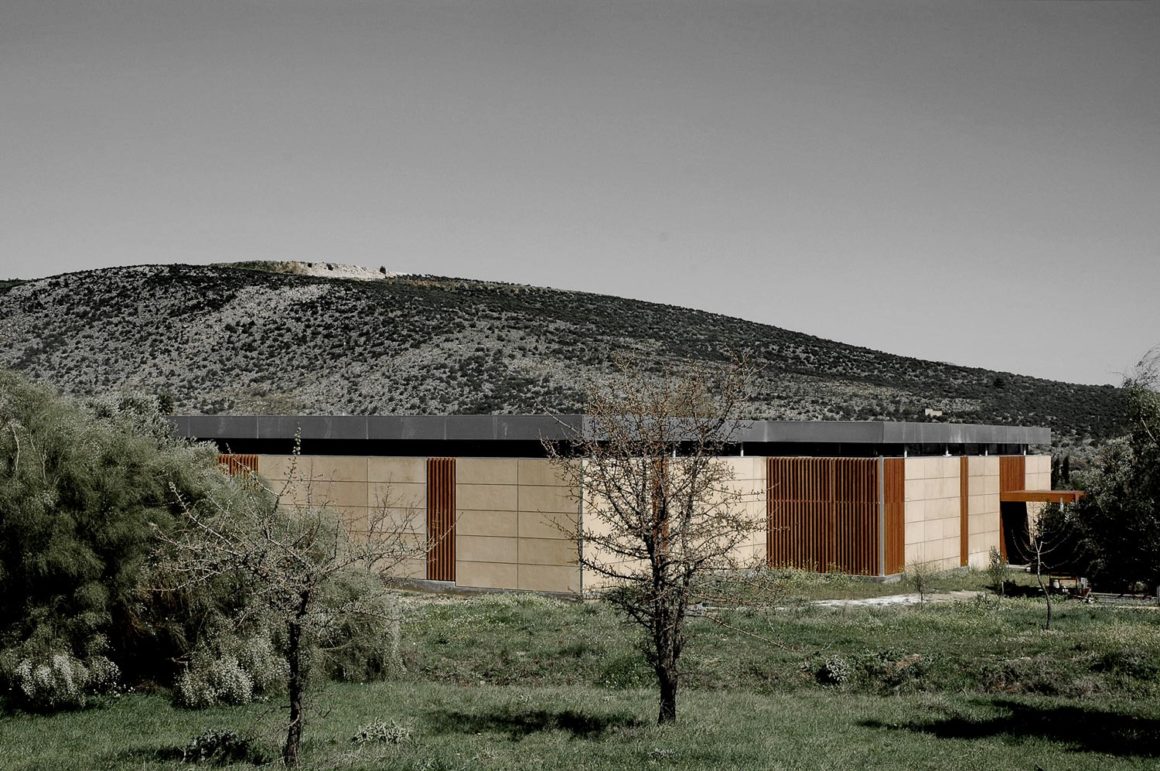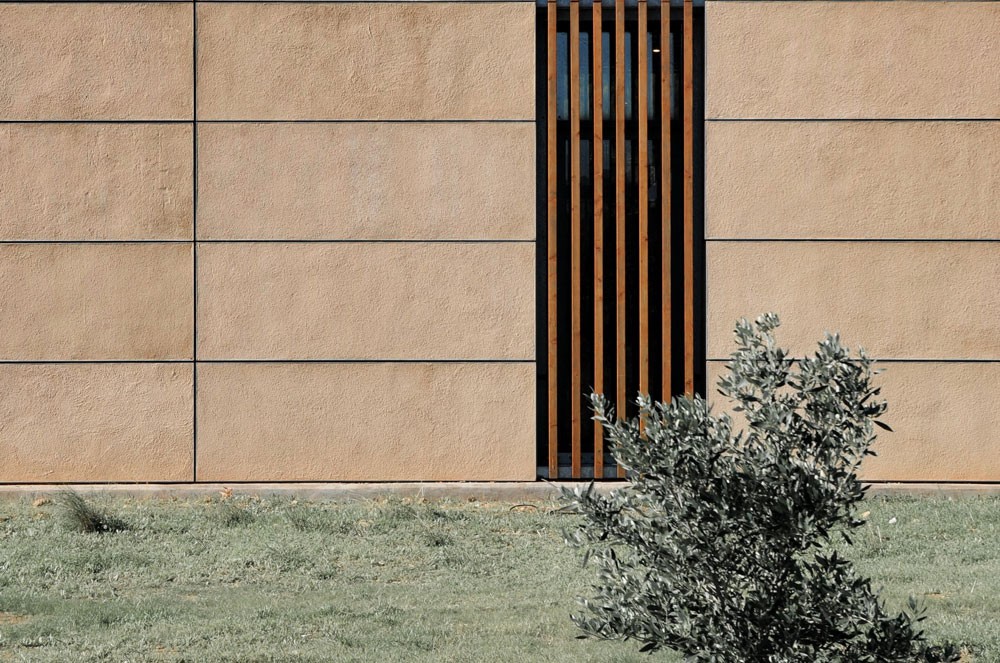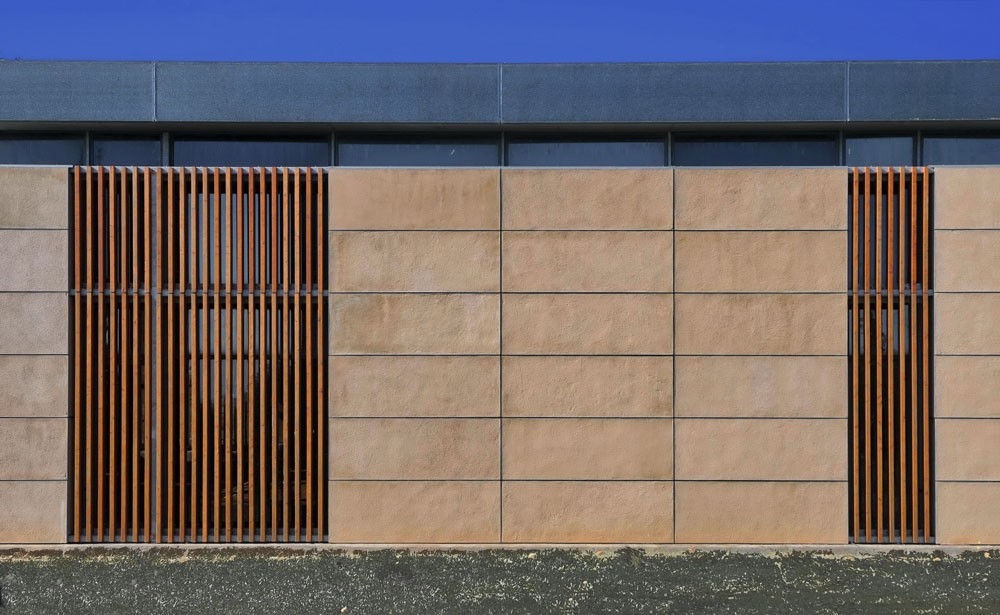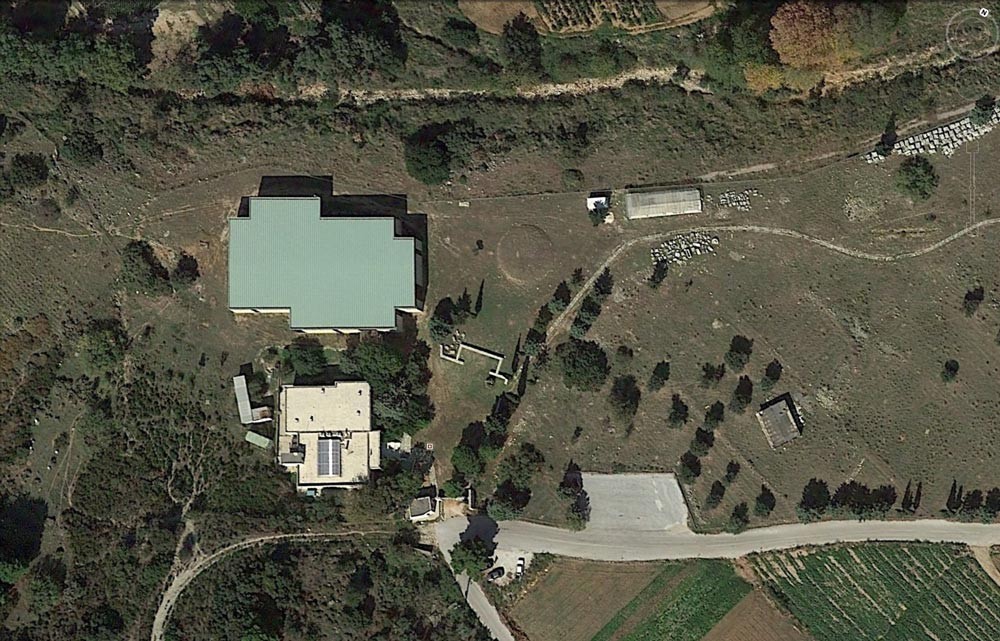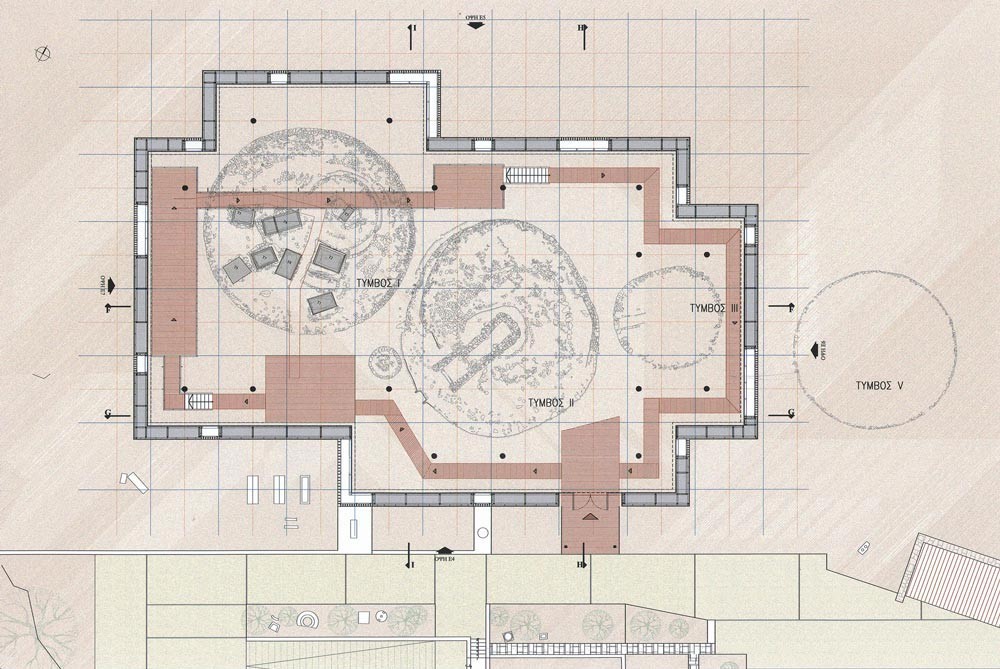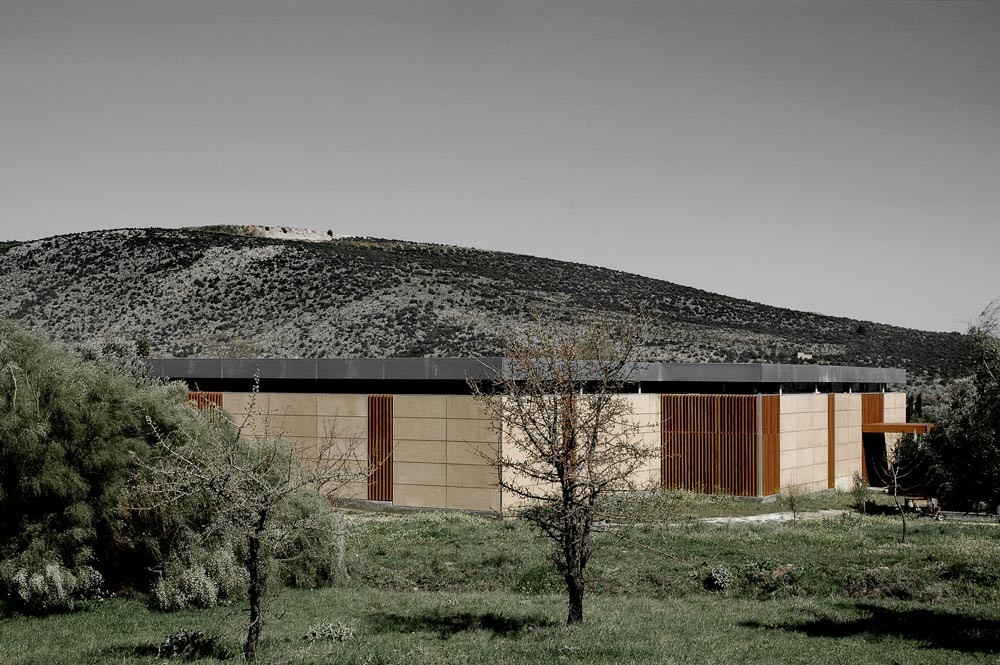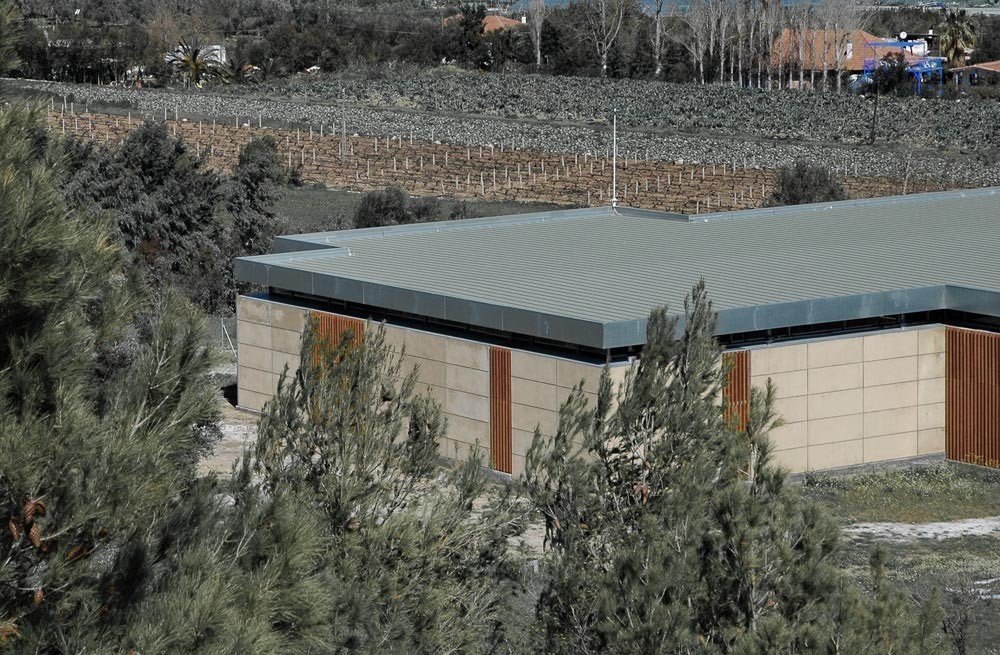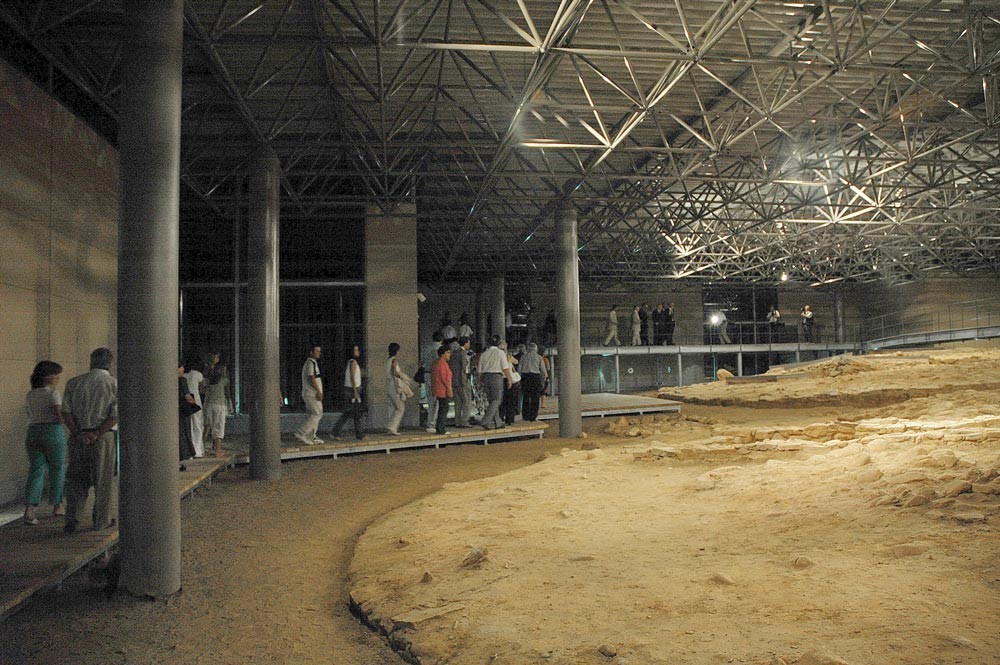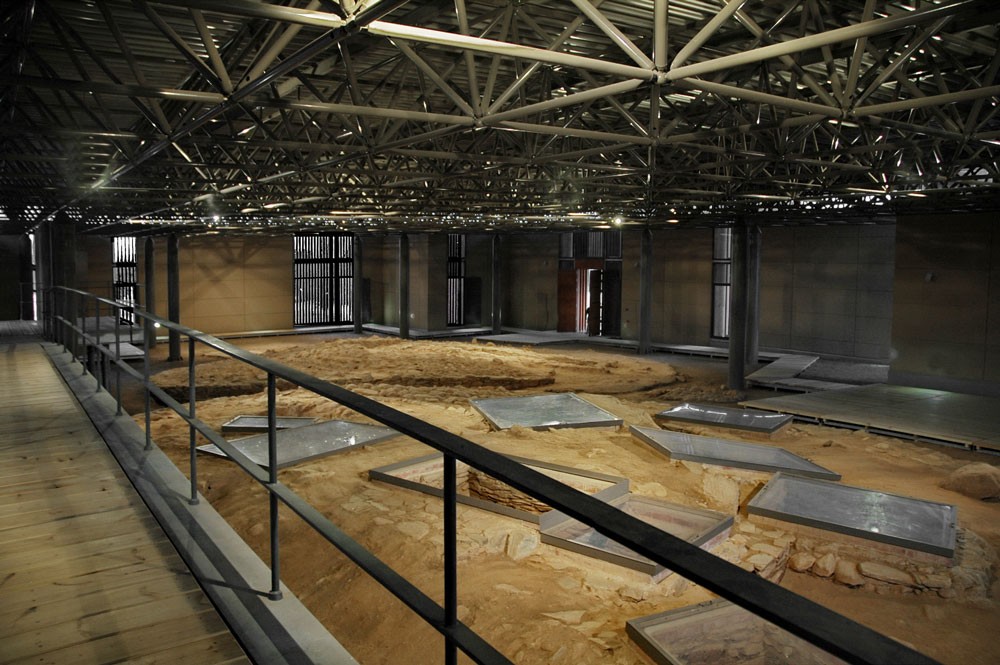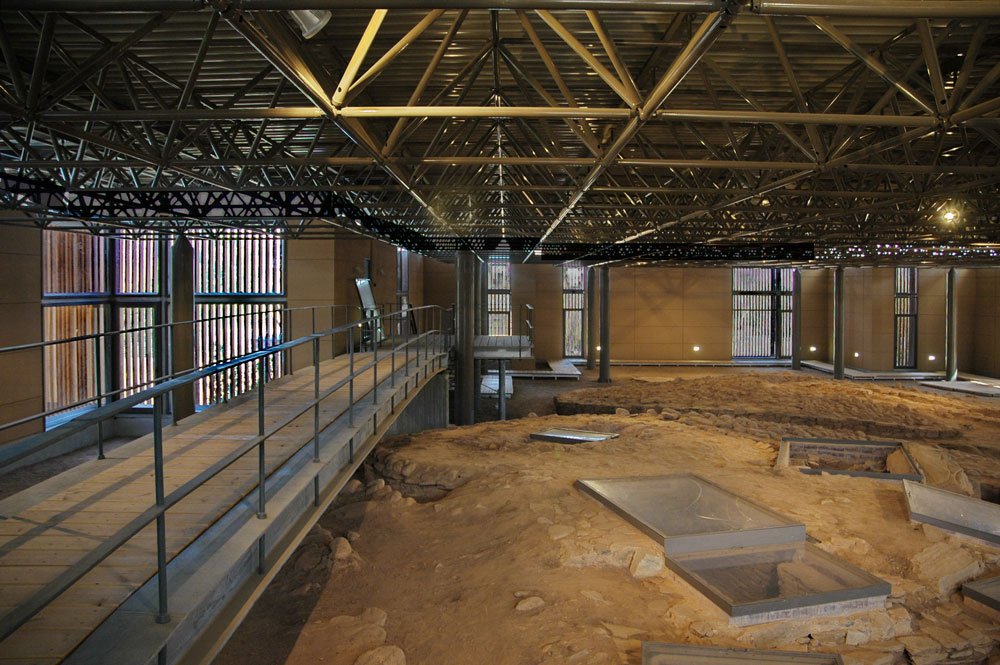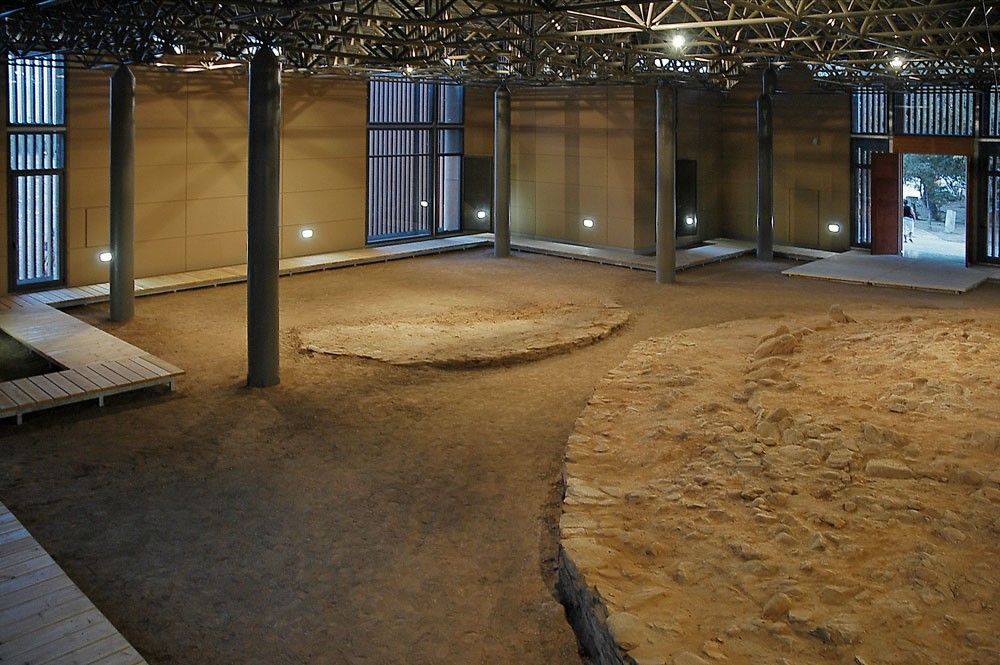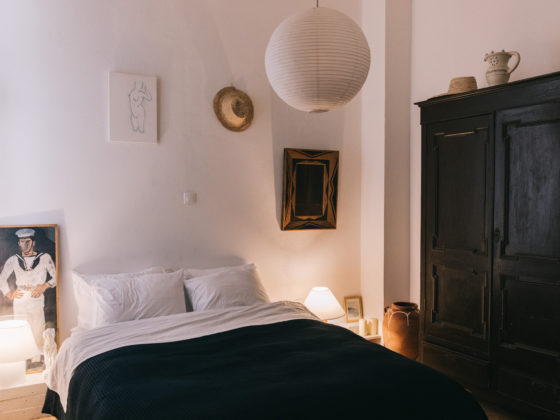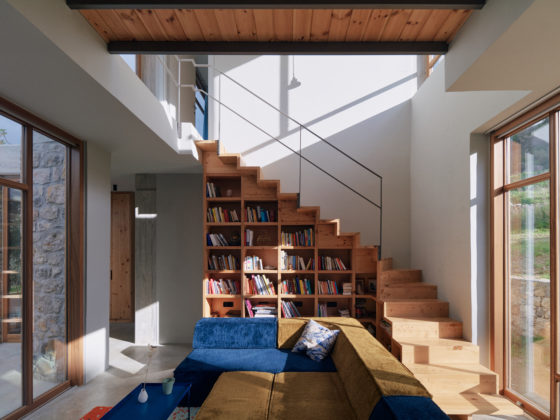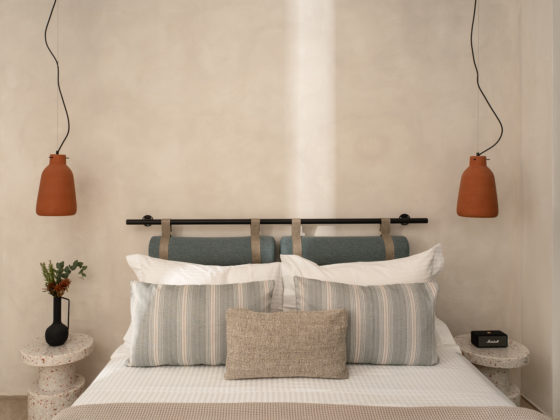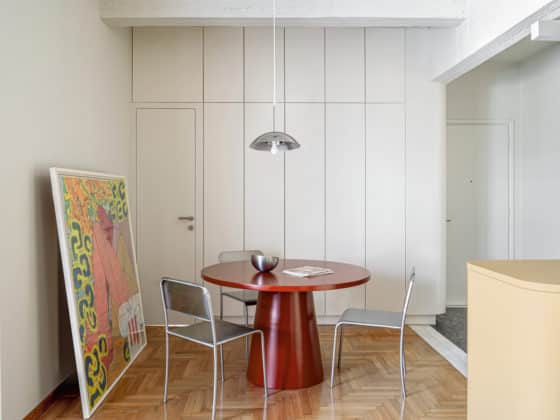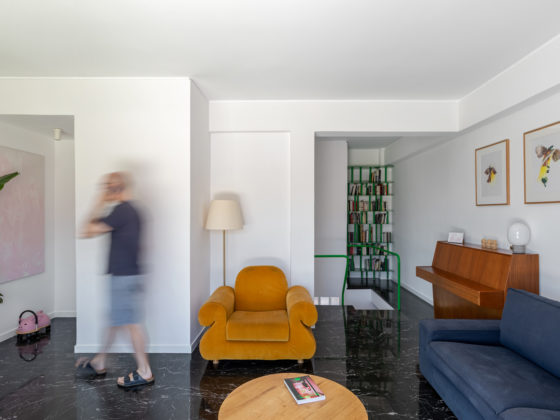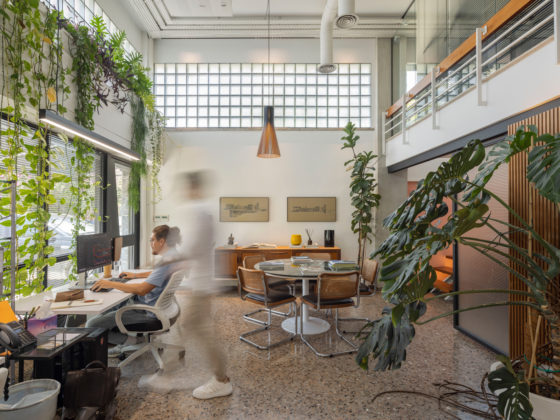Giorgos Triantafyllou & Partners designed the canopy of the tombs located in Vrana Marathonas, East Attica, an area excavated in 1970 as part of a larger and ambitious initiative to promote its archaeological site and in particular to protect two major tombs dating back to the middle Bronze Age, the so-called “twin brothers.”
This shed is not a typical building structure but is in fact a “protective shell” consisting of two main elements: a) a standalone horizontal protection frame, mounted on steel columns – acting as a shelter – and b) an “earthen” perimeter, surrounding the excavation site, similar to the fences that protect monasteries, precincts and graveyards, which creates a unique sense of introspection. This ‘mantra’ was designed to resemble a soil and earthly fence, a continuation of the landscape. The complex outline of the structure resulted from the layout of the canopy frame which could only be mounted on columns in a free formation, with archaeologicaly safe foundations and in line with the structure of the adjacent museum.
The perimeter panel is slotted and provides an optical connection between the interior and exterior, using vertical wooden blinds. These are introduced to emphasize the interior – which is dominated by the excavated tombs with the open graves and exposed animal and human bones – and create a sense of sacredness whilst establishing a parallel optical connection to the exterior surroundings. The panel is constructed using galvanized steel trusses layered by precast panels, which are in turn covered by a plaster surface resembling the texture and soil color of the surroundings. These two elements, the horizontal protection frame and the panel, coexist through a horizontal opening (band skylights), while maintaining their autonomy so that they can exist in the landscape as standalone elements.
In order to facilitate the flow of large groups of visitors around the site, wooden paths and platforms have been introduced, providing safety clearance from the excavated grounds or acting as footbridges over the open tombs. As a result, the size of the staging platforms and the width of the pathways and staircases are disproportionate. As a result of the size of the aforementioned architectural elements, they dominate the archaeological site especially in relation to the scale of the tombs. However, it would have been preferable to facilitate the visitor flow by enforcing appropriate crowd control and using smaller wooden pathways and platforms, mounted on simple wooden structures that wouldn’t affect the site, instead of the large metal frames imposed by the – rather excessive – regulation requirements.
